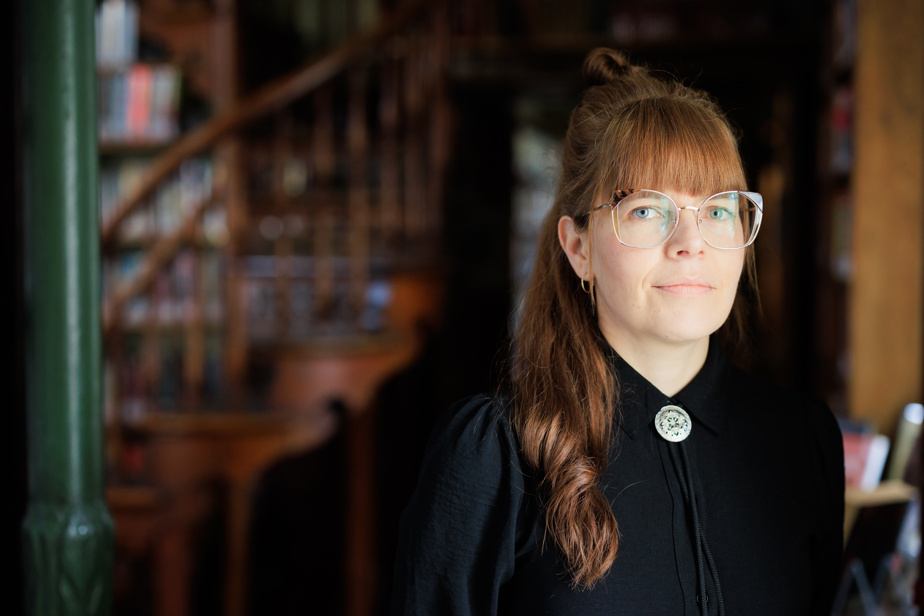An ultra-secret research laboratory on an island in the St. Lawrence River, in 1942, where scientists study the transmission of viruses by insects. Swarms of swarms invade the Montmagny region in the summer of 2024, while an unprecedented heatwave hits Quebec, in the grip of a meteoric rise in cases of violence.
Inspired by historical facts, the new novel by Mireille Gagné, Strike, at times takes on the appearance of a waking nightmare. Terribly disturbing, but furiously captivating.
“Myself, while writing it, I felt eco-anxious,” says the author of the book between two laughs. Snowshoe Hare, joined to Quebec, where she lives.
All the more reason to worry, she adds, is that a week after finishing her previous title, Ironwood, where she wrote that her tree was being pruned, fiction became reality. Then after writing about his father’s death, he died. “Lots of stuff has arrived. Seriously, if bedbugs in France start transmitting viruses, I’ll never write again! “, she says with humor.
A warning
But jokes aside, why did you choose to direct a part of your novel towards a near future which risks turning into a catastrophe?
“It’s like a warning, actually. »
We had the hottest year, there are a lot of climate disruptions, we have never seen that. I wanted us to become aware of it and then act. Like an oppressive ticking sound.
Mireille Gagné, author
It all started with his desire to write about Grosse-Île, this small piece of land in the St. Lawrence River which hosted a war laboratory in the 1940s, after having served as a quarantine place for Irish immigrants. And whose story she had heard from her mother, who moved to L’Isle-aux-Grues in the 1970s.
In the region, everyone knew someone who had worked in this famous laboratory converted after the Second War. But because of the confidentiality agreements that were signed, no one really knew what was going on there, explains Mireille Gagné. “I went to interview the children, the grandchildren of these people. There were some who told me: ‘We never knew if it was true, what my grandfather said,'” says the author, who also published poetry and short stories over the years. last decade.

PHOTO ROCKET LAVOIE, LE QUOTIDIEN
Mireille Gagné at the Morrin Center cultural center, in Old Quebec
In the head of the fly
Then comes the month of June; Mireille Gagné decides to rent a yurt for a few days in L’Isle-aux-Grues, with the idea of isolating herself to write. “I was outside with a dozen rogues who were harassing me royally, unable to write. I said to myself: but what do they want? »
That’s when the first chapter of the book came to her: she put herself in the head of a fly and her voice quickly became one of the three tones of the novel.
The knock settled in my imagination, then I began to advance in the book by linking the two.
Mireille Gagné, author
The novelist also discovered, during her research, that researchers at the war laboratory had looked into the possibility that the flies of Grosse-Île were vectors for the transmission of anthrax. Which could well explain the origin of the cases of contamination which have been recorded. There are families on Grosse-Île who have always faced the realities of the virus, she points out, since the time when part of the island welcomed immigrants in quarantine.
Today, tourist tours and guides allow visitors to go back in time to discover part of the history of the place. But perhaps, off the beaten track, there still remains something of this little-known past, she suggests. Descendants of these flies on which experiments have been carried out and which could surface at one time or another to invade the province…
“By making the knocker speak, it was also this fantasy of making nature speak, which must clearly be angry to see us act like this. We ourselves destroy our own environment; we are the only species that is capable of doing this. If I put myself in nature’s shoes, I would say to myself that she must find us so stupid. It was this observation that got me thinking. »
An observation, one might add, that is as striking as a deer fly bite.

Strike
The People
216 pages
